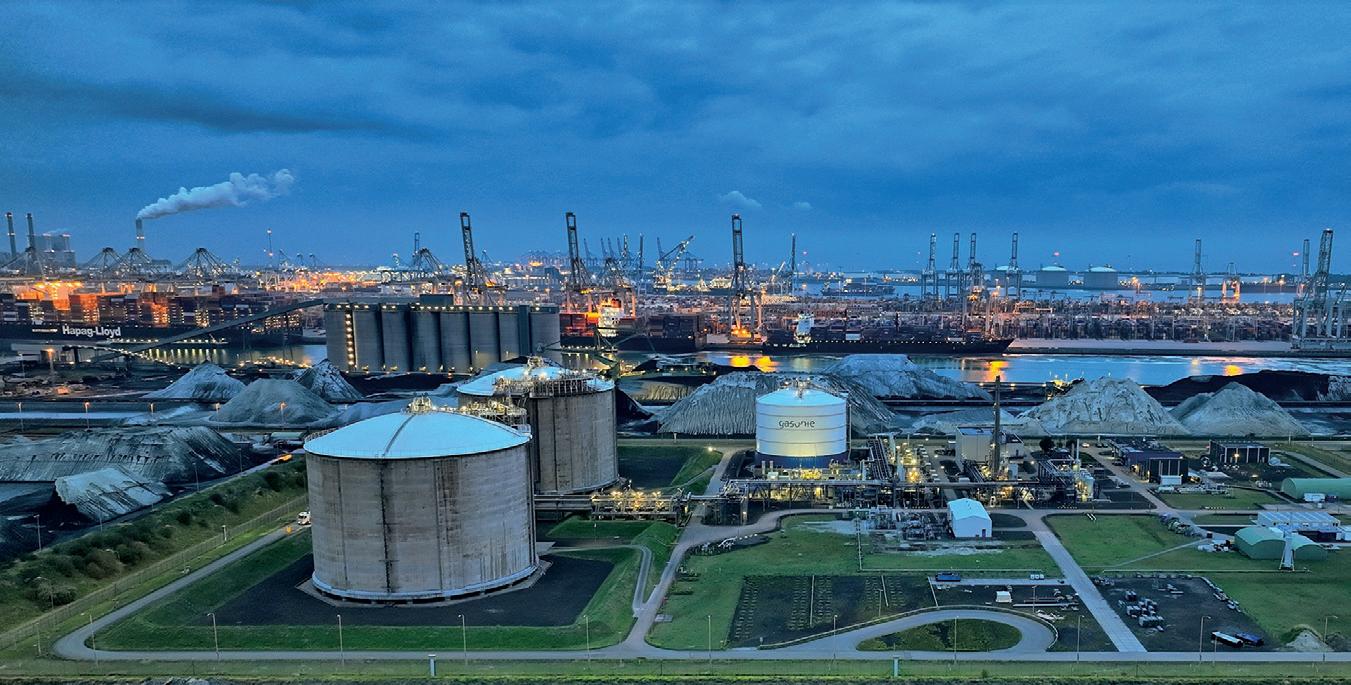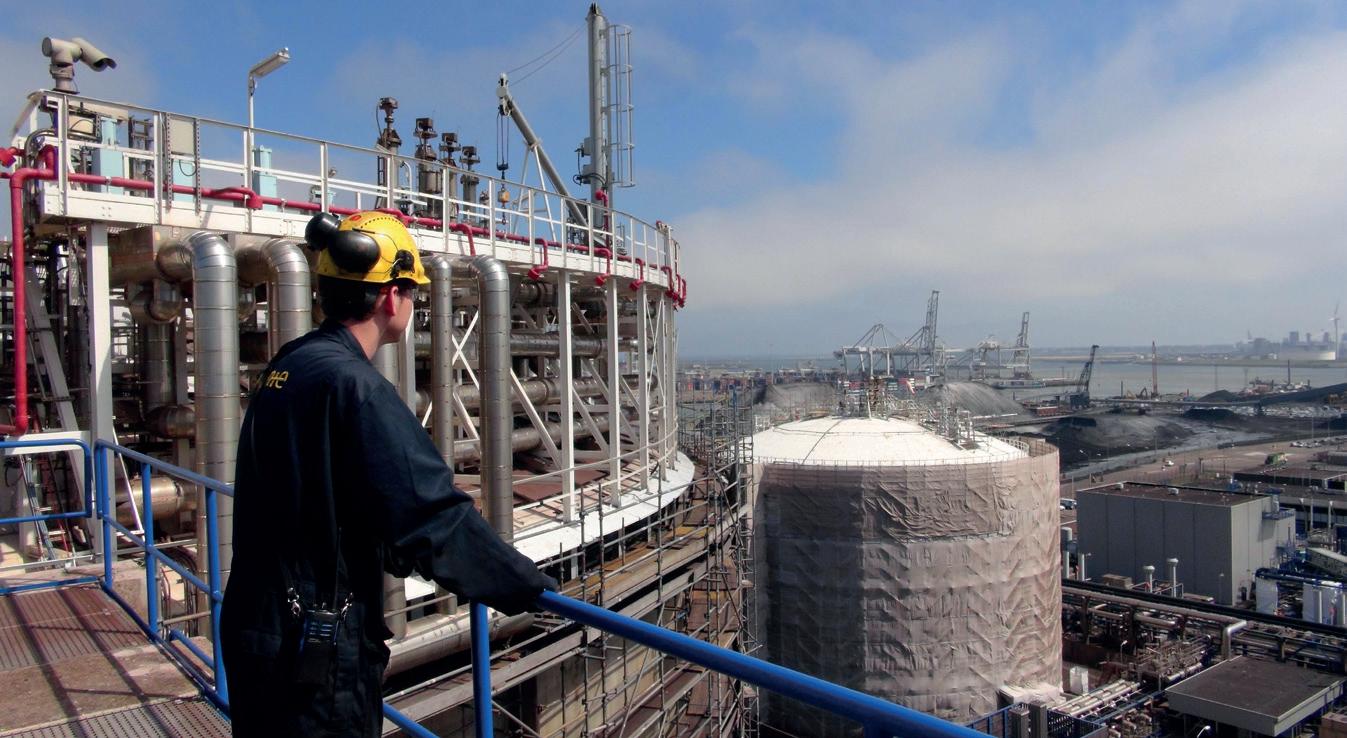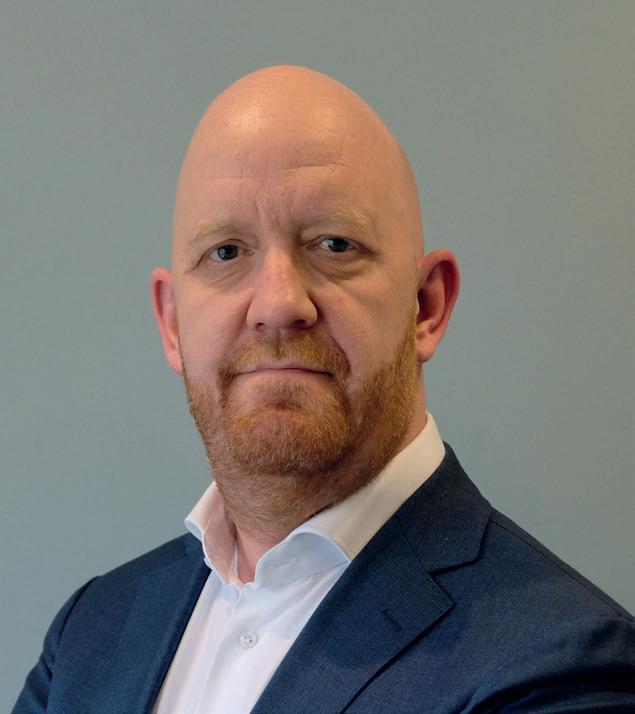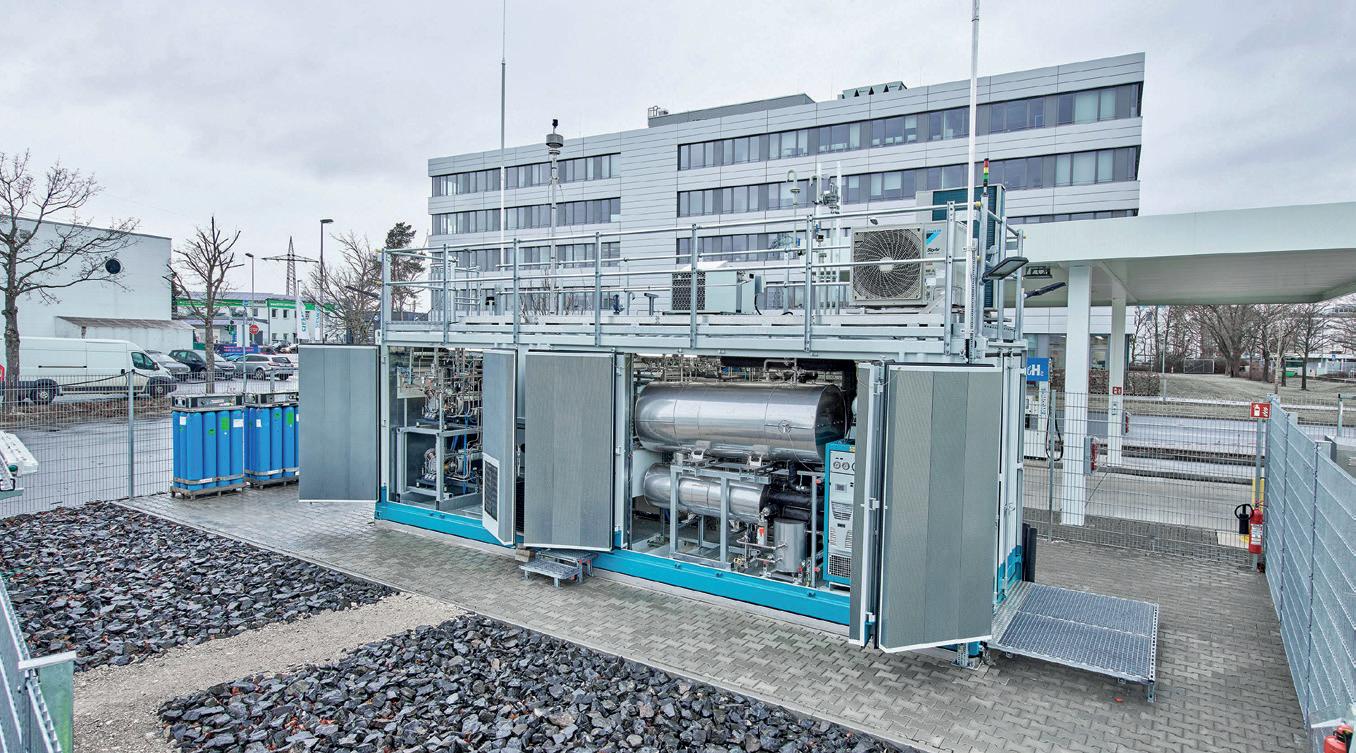
6 minute read
Europe’s ambitious new ammonia terminal
Tank Storage Magazine speaks to ACE Terminal’s project director, Egbert Vrijen, to find out how this cross-company collaboration is facilitating the import of ammonia as a hydrogen carrier into northwest Europe
IN THE PORT of Rotterdam, three strategic partners, Gasunie, HES International and Vopak, have joined forces to develop an import terminal for ammonia as a hydrogen carrier. By working together, the group aims to use existing Gasunie pipeline infrastructure at the port, combined with Vopak’s tank storage expertise and HES International’s terminal experience. ACE Terminal is planned to be operational in 2026. ‘The planned terminal is strategically located with direct deep water access from the North Sea, including quay capacity and ample land availability, connection to Rotterdam’s industry and Gasunie’s extensive pipeline infrastructure,’ says Egbert Vrijen, project director ACE Terminal. ‘The location offers an excellent starting position for the import, storage and transshipment of the green ammonia, and the further transit of both ammonia and hydrogen to end users within northwest Europe. There is also enough space to expand storage capacity and for the conversion of the ammonia back into green hydrogen.’
Advertisement
EUROPE’S APPETITE FOR GREEN AMMONIA
As Europe moves towards future fuels and zero carbon targets, facilities like ACE terminal will become more necessary. ‘The main reason for ACE terminal is to facilitate the need for green hydrogen in northwest Europe,’ says Vrijen. ‘Hydrogen will play an important role in the energy transition. The future demand for green hydrogen in the region exceeds the capacity that can be produced locally from sustainable sources.’ So, hydrogen will need to be imported to satisfy the increased demand. There are several ways to transport hydrogen over sea. It can be cooled to an extremely low temperature so that it becomes liquid. This makes it considerably more dense, taking up less space. Or you can bind the hydrogen to liquid organic hydrogen carriers (LOHC). ‘At the moment, we see that the most attention is currently being paid to the variant where hydrogen and nitrogen are combined to form ammonia. This is a technology and a trade that already exists and is currently the most promising solution in the short term for long distances,’ says Vrijen. ‘At ACE terminal we focus on this technology, in which ammonia is a hydrogen carrier.’ The partners are currently in talks with several parties across the globe that are looking to convert green hydrogen into ammonia enabling higher volumes to be transported. ‘From Chile to Namibia, from Australia to Saudi Arabia, anywhere with a lot of sun and/or wind and plenty of space for energy farms,’ says Vrijen. ACE Terminal will be an open access terminal. Once ACE terminal customers import the ammonia to Rotterdam, it can be stored as feedstock or cracked to hydrogen ready to distribute. It’s key to note that ACE Terminal will not own the ammonia it receives. ‘We will
01

02
facilitate the import towards northwest Europe for our customers,’ says Vrijen. ‘It is expected that the imported green ammonia will initially be of interest in particular to markets that now use grey ammonia made from natural gas. For example the fertilizer industry uses ammonia as feedstock. But there are also opportunities for using ammonia in heavy transport like for example as a shipping fuel.’ On top of facilitating the import of ammonia, ACE terminal could be a facility that extracts even more use from the product. ‘This location might also give opportunities for converting the ammonia into hydrogen again. The hydrogen can be fed into the energy system using the Dutch and European hydrogen pipeline network, or via the excellent waterway connectivities,’ suggests Vrijen.
COLLABORATIVE APPROACH
None of the work happening at ACE Terminal Rotterdam would be possible without the collaboration between Vopak, HES International and Gasunie. Gasunie already has a range of facilities and infrastructure in place at Maasvlakte in the Port of Rotterdam. ‘We are aiming to make the tanks suitable for the storage of ammonia with expected relatively limited adjustments,’ says Vrijen. ‘Access to the adjacent site of HES International gives us quayside capacity for large seagoing vessels and space for future expansion and other developments like ammonia cracking,’ he continues. ‘And our partner Vopak already owns and operates several ammonia terminals located all over the world. Vopak has a great deal of knowledge about the technology to safely store ammonia and the global market. Therefore this partnership is a powerful combination!’ With three well-established, reputable companies coming together for this initiative, it’s no surprise that standards are high. ‘The future company will embrace and promote the same standards and values as its parent companies which all have a strong focus on diversity and inclusion,’ says Vrijen. As for sustainability measures, Vrijen explains: ‘The Netherlands is one of the countries with the most stringent laws and regulations of the world. We are currently investigating the technical, economic and financial scope of the project focused on handling and storing ammonia (and green hydrogen). Sustainability, as well as safety, are always part of our scope.’

RAPID TIME-TO-MARKET
While it’s not fully up and running yet, ACE Terminal is planned to be operational in 2026. ‘For a large part we will make use of existing assets, currently used for natural gas storage for peak load capture,’ says Vrijen. That includes two tanks that can currently store 78 million m3 of LNG. ‘HES International has a deep sea quay and ample land available to expand the storage capacity. Gasunie is currently developing the national hydrogen network which means that ACE Terminal will be connected to the pipelines into northwest Europe,’ Vrijen continues. Making use of the existing infrastructure will facilitate the speedy timeline for operations. This is also what sets ACE Terminal apart from other facilities, according to Vrijen. ‘ACE Terminal differentiates itself from others because of its short timeto-market. The terminal will make use of existing infrastructure and assets to achieve this,’ he says.
EUROPE’S ENERGY SECURITY
‘The current geopolitical situation has made everyone very aware of dependence and energy security,’ says Vrijen. By repurposing equipment and infrastructure to be able to handle future fuels, ACE terminal Rotterdam is positioning itself as a leader in achieving regional energy security – all in a very short timescale. Beyond securing ammonia for distribution, the goal is to turn the existing natural gas facility into one that’s equipped for the impending energy transition. ‘By 2026, ACE Terminal will be able to handle and store ammonia and green hydrogen,’ says Vrijen. ‘A cracker facility added to our services would make it possible to convert the ammonia back into hydrogen again.’ ‘With our access to the Dutch and European hydrogen pipeline network and waterways, the hydrogen can then be fed into the energy system, ready for use and fulfilling customer demand for green hydrogen,’ Vrijen continues. This could have a huge impact on Europe’s net zero goals and help wean the region off fossil fuels much sooner than perhaps initially thought possible.
For more information:
www.aceterminal.nl
01 Access to existing Gasunie infrastructure at the Port of Rotterdam speeds up the time-tomarket and lessens the terminal’s impact on the environment
02 Egbert Vrijen, project director, ACE Terminal 03 ACE Terminal outlines how the facility is expected to store, handle and distribute ammonia and hydrogen once operational in 2026
Ammonia terminal for import of hydrogen carrier
Start 2021 - Operational 2026
Safe and efficient storage and handling
Possibility to expand storage capacity Possibility for cracking facility Strategic location with direct acces from sea
Direct connection to local industry and NW Europe
03
Terminal with deep sea quay capacity










